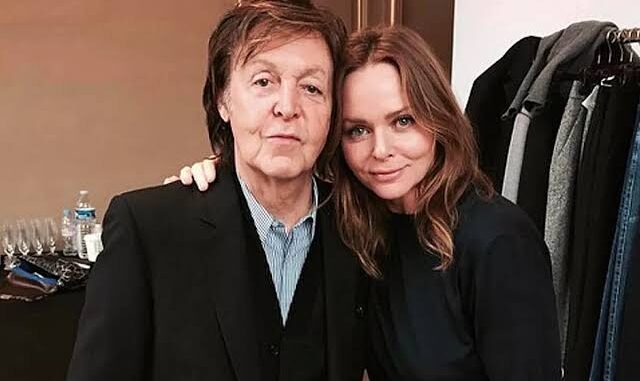
It was a humid summer evening in Manhattan. Inside the packed venue, thousands had gathered to witness a night of nostalgia and musical legacy. Paul McCartney, now 83 but still vital and sharp, stepped onto the stage under soft blue lights. His voice, though touched by age, carried weight and warmth as it opened with the familiar chords of “Let It Be.” The crowd sang, swayed, remembered.
But the most poignant moment came quietly, partway through the set, when Paul paused, picked up his acoustic guitar, and began playing “Here Today,” the elegy he had written in 1982 for John Lennon — his friend, collaborator, and one-time adversary. His voice cracked only slightly on the lines, “And if I said I really knew you well, what would your answer be?” The song, long a staple of his performances, had always felt like an open letter to a lost brother.
Tonight, though, it felt different.
Near the center of the front row, an elderly man sat hunched forward, weeping silently. His white knuckles gripped a worn pencil sketch — yellowed with age — of two young men sitting shoulder to shoulder on a Liverpool sidewalk, guitars in hand. It was Lennon and McCartney, youthful and raw, full of promise.
The man clutched the drawing against his chest as Paul strummed the final chords. Paul’s eyes caught his. For a moment, the concert lights faded. The man didn’t wave or call out. He just looked back with something deeper than fandom. Something more like memory.
After the show, moved by the moment, Paul asked a crew member to find out who the man was. Backstage, still damp with sweat and emotion, he waited. The man arrived quietly, escorted without fuss. He looked even older up close — thin frame, slightly stooped, but with sharp, blue-gray eyes that held a story.
“I was John’s schoolmate,” he said, his voice faint but certain. “Not close friends. But enough. We talked about music once. He asked me to hold onto something.”
From the inner pocket of his coat, the man drew a creased envelope. He held it out.
“I’ve kept this for 60 years,” he said. “I was waiting for the right person to give it to.”
Paul hesitated, then took it with reverence. Inside was a folded piece of lined notebook paper, ink slightly faded. At the top, in Lennon’s unmistakable handwriting, were the words: If I go first, don’t cry – I’ll still play rhythm when you sigh.
Paul didn’t speak for several moments. He stared at the line, fingers tracing the contours of the letters as though touching Lennon himself. It wasn’t a polished lyric. It wasn’t a known quote. It was just John — irreverent, tender, unfiltered.
Tears welled in Paul’s eyes, but he blinked them back.
“You’ve kept this all this time?” he asked.
The man nodded. “He scribbled it in school. Said, ‘It’s a joke, but maybe someday someone will need it.’ I don’t know why I kept it. Maybe I always knew.”
They stood in silence.
Paul folded the paper gently, returned it to the envelope, and placed it in his jacket. Then he reached out and embraced the man.
“Thank you,” he whispered.
Later that night, as he stepped out into the New York air, Paul looked up at the summer sky — hazy stars above the city’s glow. He didn’t say much, but a few crew members heard him murmur softly, as though to someone beside him, “So you’re still writing, aren’t you, John?”
No press release would mention the man. No photos would surface. The moment didn’t trend. But for Paul, it was a message — from the past, from a friend, from somewhere beyond stage lights and sound checks.
And perhaps, somewhere far away, a rhythm guitar played softly in reply.